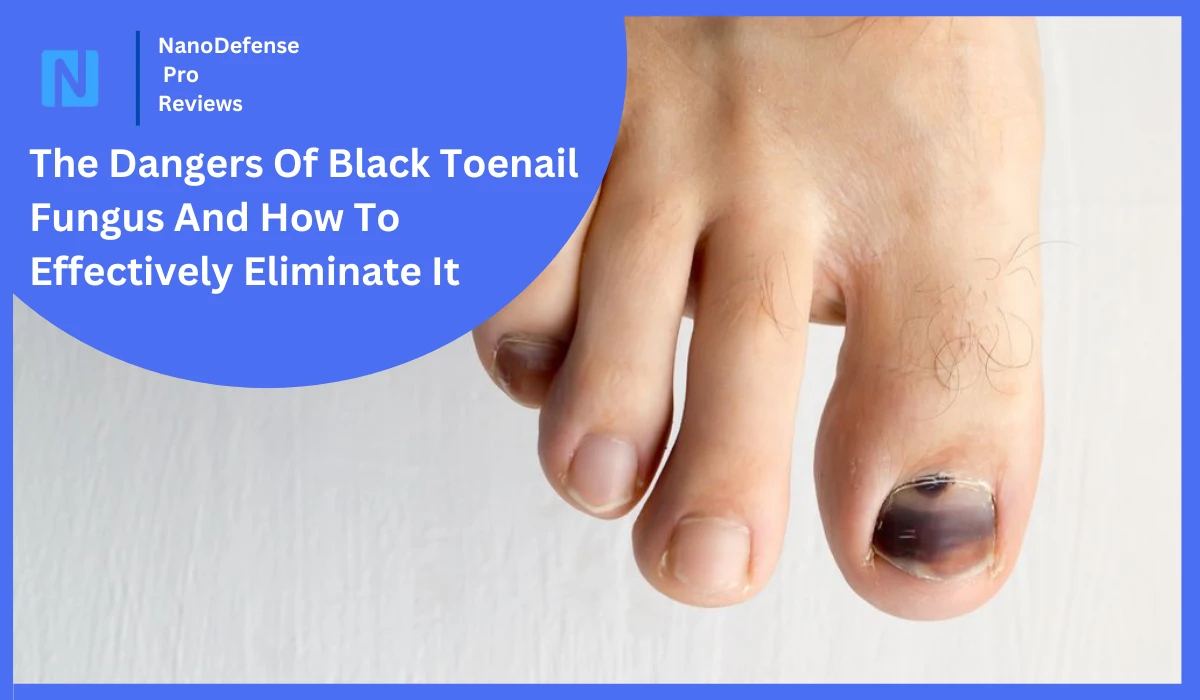The Dangers Of Black Toenail Fungus And How To Effectively Eliminate It
Find out the dangers of black toenail fungus and effective elimination methods. From causes to treatments, learn how to tackle this common foot ailment and regain healthy nails. Explore preventive measures and expert tips for long-term foot health, ensuring your feet stay fungus-free and beautiful.

Disclaimer: This article has been generated with the assistance of AI tools. While our research team has fact-checked the content, readers should independently verify information for accuracy and reliability.
Black toenail fungus, also known as onychomycosis, is one of the most severe and unsightly forms of fungal nail infection. Characterized by a distinct black or dark brown discoloration of the nail, this persistent condition can be difficult to treat and lead to serious complications if left unchecked.
Understanding the causes, recognizing the symptoms, and knowing the most effective treatment options are crucial for addressing black toenail fungus and restoring the health and appearance of your nails. In this comprehensive guide, we’ll explore everything you need to know about this troubling foot condition.
Causes Of Black Toenail Fungus

Toenail fungus, including the black variety, is primarily caused by a group of fungi called dermatophytes. These organisms thrive in warm, moist environments and can infiltrate the nail through small cuts, cracks, or other trauma to the skin around the nail.
Some factors that can increase your risk of developing black toenail fungus include:
- Walking barefoot in public areas like pools, showers, or locker rooms
- Sharing personal items like towels, socks, or nail clippers
- Having a weakened immune system due to underlying conditions
- Experiencing poor circulation, often seen in diabetes
- Sustaining an injury or trauma to the nail or surrounding skin
In some cases, black toenail fungus may also be caused by a yeast infection or non-dermatophyte mold, rather than the more common dermatophyte fungi.
Symptoms Of Black Toenail Fungus
The hallmark symptom of black toenail fungus is, of course, the distinct discoloration of the nail. The nail may start with a yellow or brown hue before progressing to a dark, almost black appearance.
Other common symptoms associated with this condition include:
- Thickening and distortion of the nail shape
- Brittleness, crumbling, or ragged edges of the nail
- Foul nail odor
- A buildup of dark-colored debris under the nail
In severe cases, the nail may even start to completely separate from the nail bed, leading to significant pain and discomfort.
Treating Black Toenail Fungus
Addressing black toenail fungus typically requires a multi-pronged approach involving a combination of professional treatment and at-home care. Your podiatrist or dermatologist may recommend one or more of the following treatment options:
Topical Antifungal Medications
Prescription-strength topical antifungal lacquers, solutions, or ointments containing ingredients like ciclopirox or efinaconazole can help penetrate and destroy the fungus within the nail. These treatments require consistent, long-term use – often 6-12 months – to fully clear the infection.
Oral Antifungal Drugs
For more stubborn or severe cases of black toenail fungus, your doctor may prescribe oral antifungal medications like terbinafine or itraconazole. These work systemically to fight the fungus from the inside out and can be more effective than topical treatments alone.
Laser Therapy
Innovative laser treatments use targeted light energy to heat and destroy the fungal cells within the nail. Multiple laser sessions spaced several weeks apart are typically required, but this approach can provide faster results than medications in some cases.
Nail Removal
In extreme situations where the nail is severely damaged, your podiatrist may recommend partial or complete nail removal. This allows the underlying healthy nail to regrow without the fungal infection. While an invasive procedure, nail removal may be the best option for eliminating stubborn black toenail fungus.
In addition to professional treatment, there are also some home remedies and lifestyle changes that can help support the elimination of black toenail fungus, including:
- Maintaining good foot hygiene and keeping feet clean and dry
- Wearing breathable, moisture-wicking socks
- Disinfecting nail clippers, files, and other tools
- Treating any underlying conditions like diabetes
How To Prevent Black Toenail Fungus?
Even after successfully treating black toenail fungus, it’s important to take proactive steps to prevent the infection from returning. This includes:
- Carefully following your podiatrist’s treatment plan and completing the full course of therapy
- Practicing good foot hygiene on an ongoing basis
- Avoiding walking barefoot in public areas
- Disinfecting personal care items and avoiding sharing them with others
Final Note
With the right combination of professional treatment and diligent home care, you can effectively eliminate black toenail fungus and restore the health and appearance of your nails. Remember, early intervention is key, so don’t hesitate to see a podiatrist at the first sign of a fungal infection.
By taking a proactive, comprehensive approach, you can conquer this stubborn condition and enjoy the comfort, confidence, and peace of mind that comes with having clear, healthy nails once again.

Lisa Miller
Dr. Lisa Miller is a board-certified Dermatologist with over 15 years of experience treating a wide range of skin, hair, and nail conditions. She received her medical degree from the prestigious Columbia University College of Physicians and Surgeons and completed her dermatology residency at the University of California, San Francisco, one of the top dermatology training programs in the country. Dr. Miller is an active member of the American Academy of Dermatology and has authored numerous peer-reviewed articles and book chapters on the latest advancements in dermatological care. She is frequently invited to speak at national and international medical conferences, sharing her expertise with other clinicians. In her private practice, Dr. Miller takes a patient-centered approach, collaborating closely with each individual to develop customized treatment plans. She is passionate about empowering her patients to achieve optimal skin, hair, and nail health through a combination of the latest medical therapies and lifestyle recommendations.
